Where to Dive French Polynesia’s Big Five
Venture on a South Pacific scuba safari to French Polynesia, where 118 islands and atolls house marine life of all sizes and statures—pelagic creatures venture through the blue and coral reefs provide shelter to the ocean’s most minute critters. While fish in the thousands can form schools larger than buildings, these five animals impress solo.
Humpback Whales
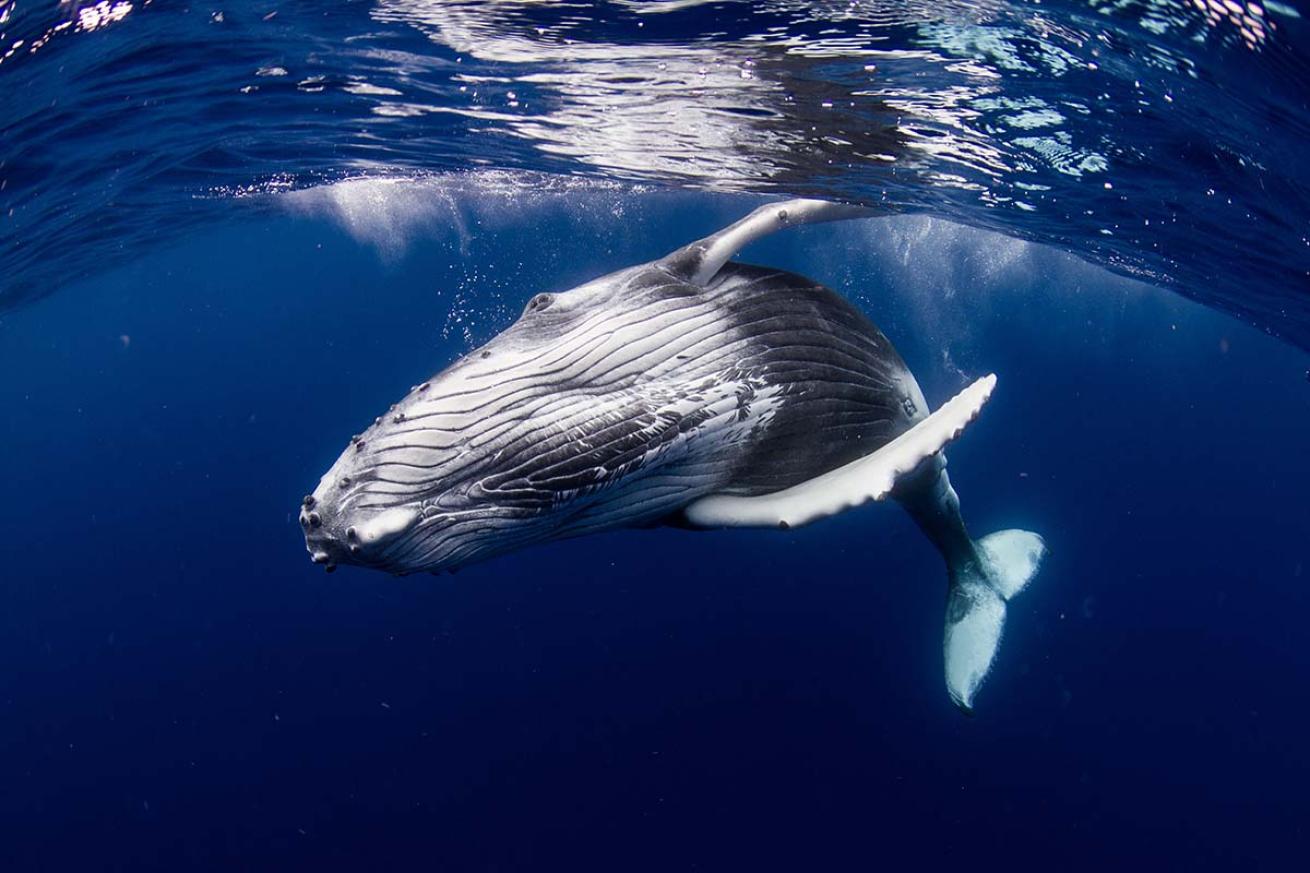
Shutterstock.com/le bouil baptisteA humpback whale arcs just below the surface.
From July to early November each year, humpback whales migrate through French Polynesia’s waters, often resting in the lagoon surrounding Moorea. At the start of the season, bulls and juvenile whales set the pace, often participating in exciting heat runs or stopping to interact with swimmers. Later in the season, mothers and their calves trail behind, occasionally escorted by a male. Encountering them directly is rare, but it’s common to hear the tune of a whale male singing at most of Moorea’s major dive sites—an experience that will send vibrations through your heart.
Join a guided whale swim tour to witness these gentle giants cruise through the waters below. Dr. Michael Poole, a marine biologist who has been studying the humpback whales since 1987, offers informational tours and whale swims from Moorea through Dolphins and Whale Watching Expeditions.
Manta Rays
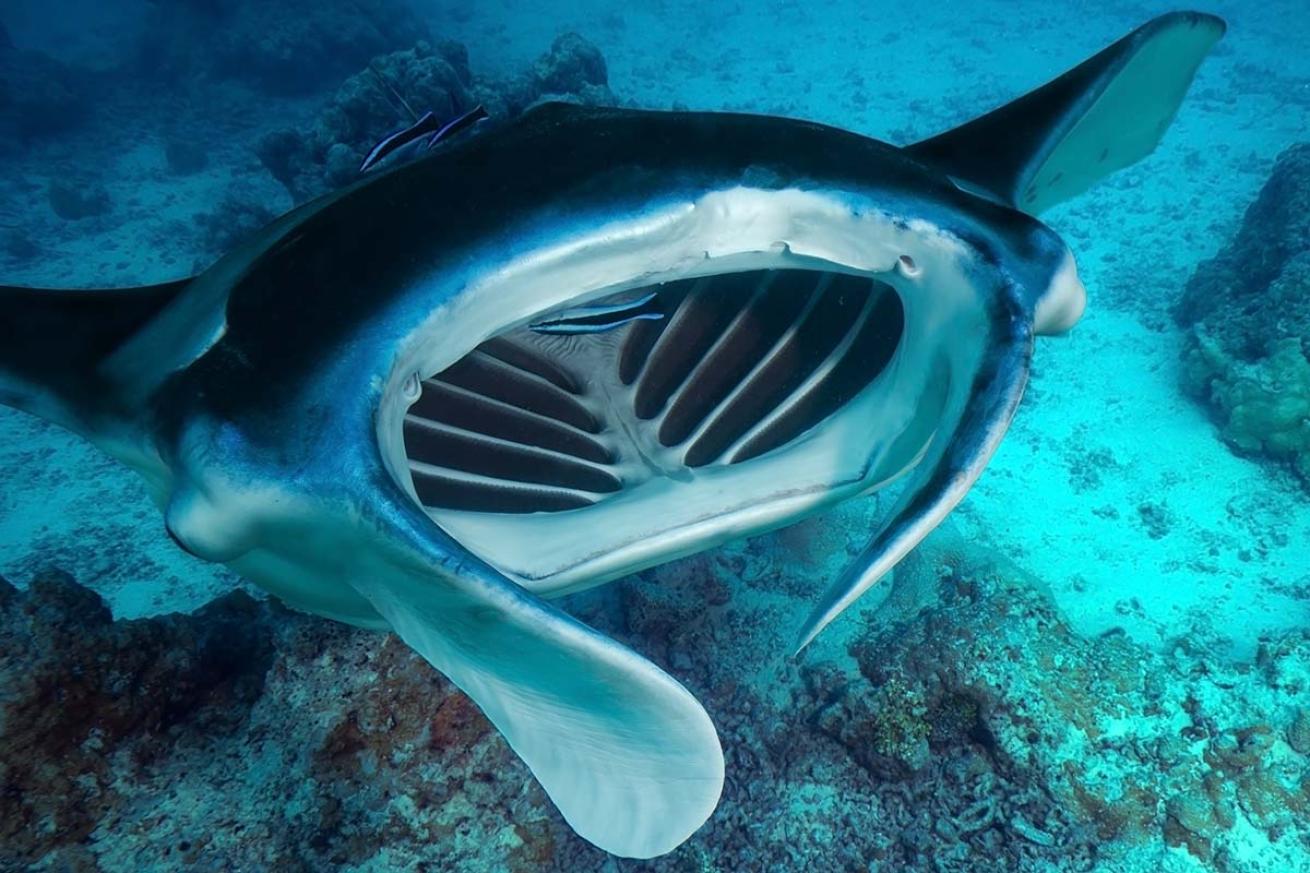
Yann hubertA manta ray soars past.
With wingspans of up to 30 feet, oceanic manta rays take flight underwater. Oceanic manta rays are seen all throughout the region and there are a few dive sites where you’re most likely to spot these otherworldly creatures.
The dive site of Anau off the island of Bora Bora is a popular spot for manta rays to come and be cleaned by wrasse who live around the reef. Dives here tend to be relaxing. You settle near the bottom, about 60 feet, and watch manta rays dive and glide through the blue, occasionally flipping backwards like acrobats.
The atoll of Tikehau is also a prime place for manta spotting. While manta rays cruise through all major dive sites, they’re most often spotted an abandoned pearl farm turned manta ray sanctuary. While you can see them on a dedicated snorkeling tour, most dive operators stop for a quick snorkel session with these manta rays on two-tank dive days.
Dolphins
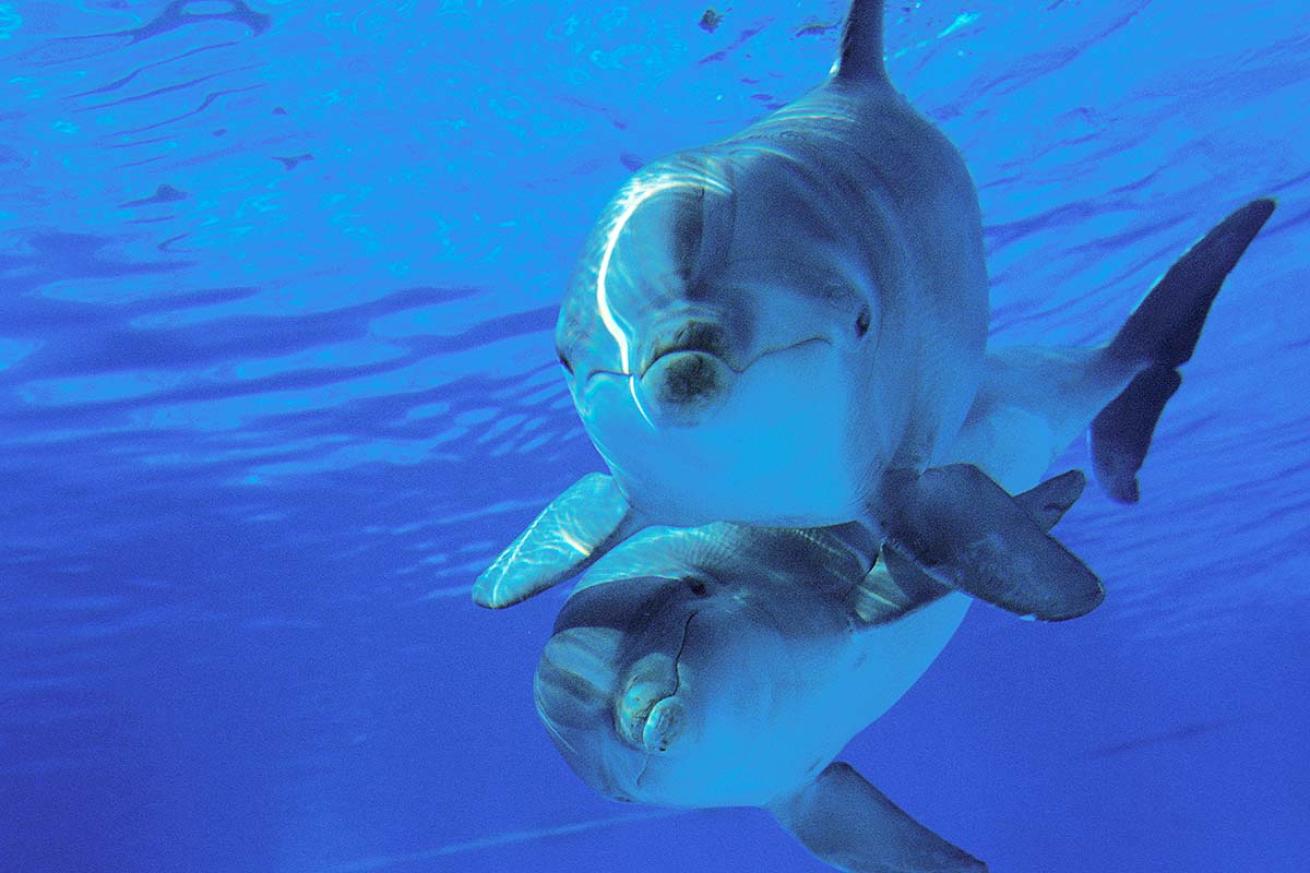
Shutterstock.com/slowmotiongliTwo bottlenose dolphins playfully inspect a diver.
The world’s second largest atoll, Rangiroa, is home to a pod of around thirty bottlenose dolphins who can usually be spotted playing in the waves of Tiputa Pass. Regular scuba divers at Tiputa Pass recognize each dolphin by their dorsal fin, and five of the dolphins in particular have a penchant for interacting with humans. You can usually hear the dolphins before you see them if you listen for chirps and whistles. The most playful of the pod zip and twirl around, darting through divers’ bubbles. Sometimes they socialize for the whole dive, other times they cruise on by. Fortunately, your chances at some form of dolphin spotting are high no matter what time of the year you visit.
Sharks
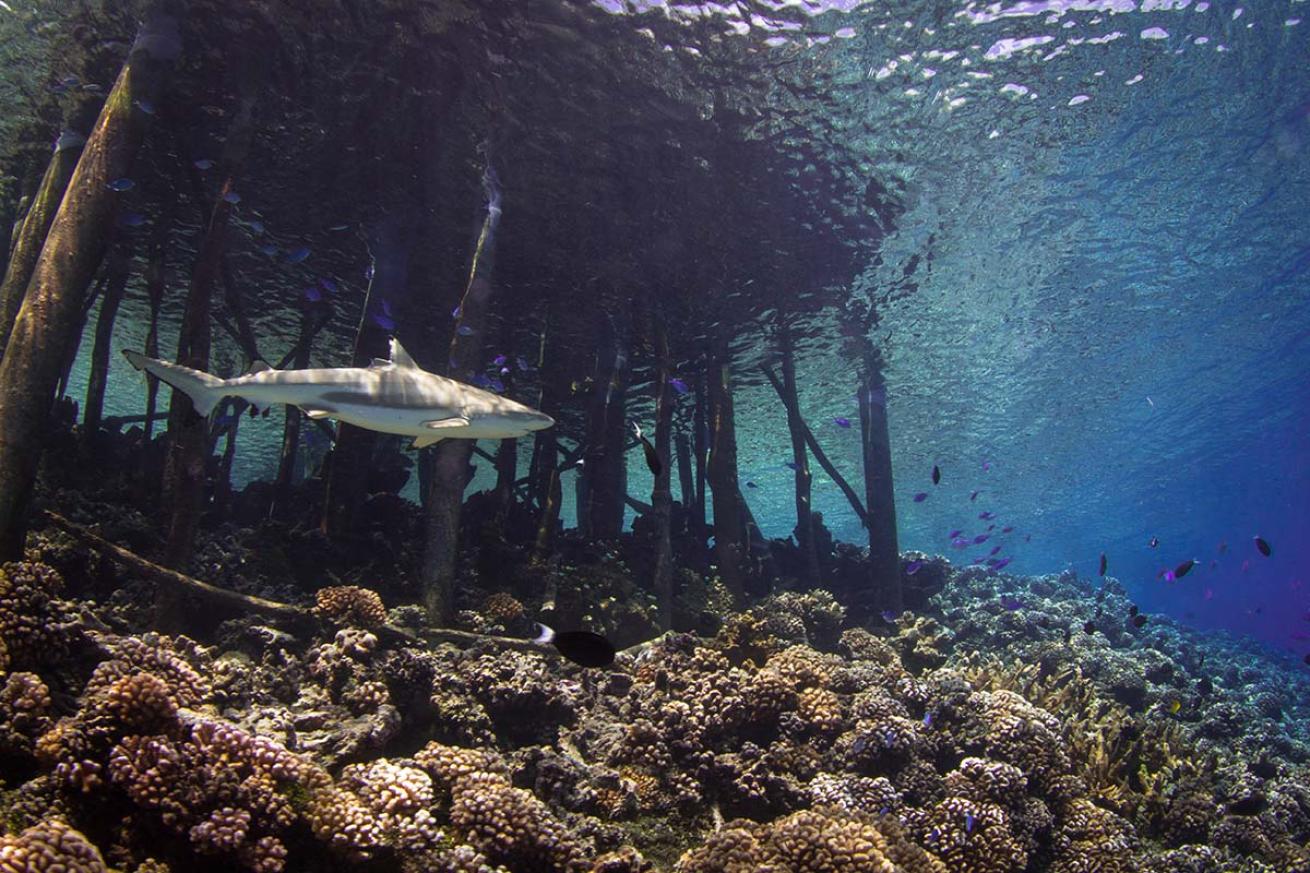
Shutterstock.com/Kristina VackovaA grey reef shark swims past a jetty over a coral reef in Fakarava, French Polynesia.
Hundreds of grey reef sharks gather at Fakarava’s Tumakohua Pass, a UNESCO Biosphere Reserve. Other shark species like lemon sharks, tiger sharks, hammerhead sharks, black tip and white tip reef sharks sharks also grace the channel. Fakarava’s large concentration of sharks is largely due to its place as a fish spawning site for multiple species of fish, like the 17,000 camouflage groupers who come each June and July, according to shark biologist Johann Mourier. These cycles of spawning supply the pass with a constant source of food for the toothy residents.
The sharks are so abundant, in fact, scuba divers have nicknamed this site “The Wall of Sharks.” Perhaps the most thrilling stop on a scuba safari, it’s possible to witness them swim around the pass in a haze, conserving their energy for nightfall. On a night dive, the channel takes a more dramatic turn as sharks hunt in makeshift packs to take down prey, like groupers, that can be nearly the same size as themselves. Once a grouper is caught, the sharks compete amongst themselves for bites of the prize.
Sea Turtles
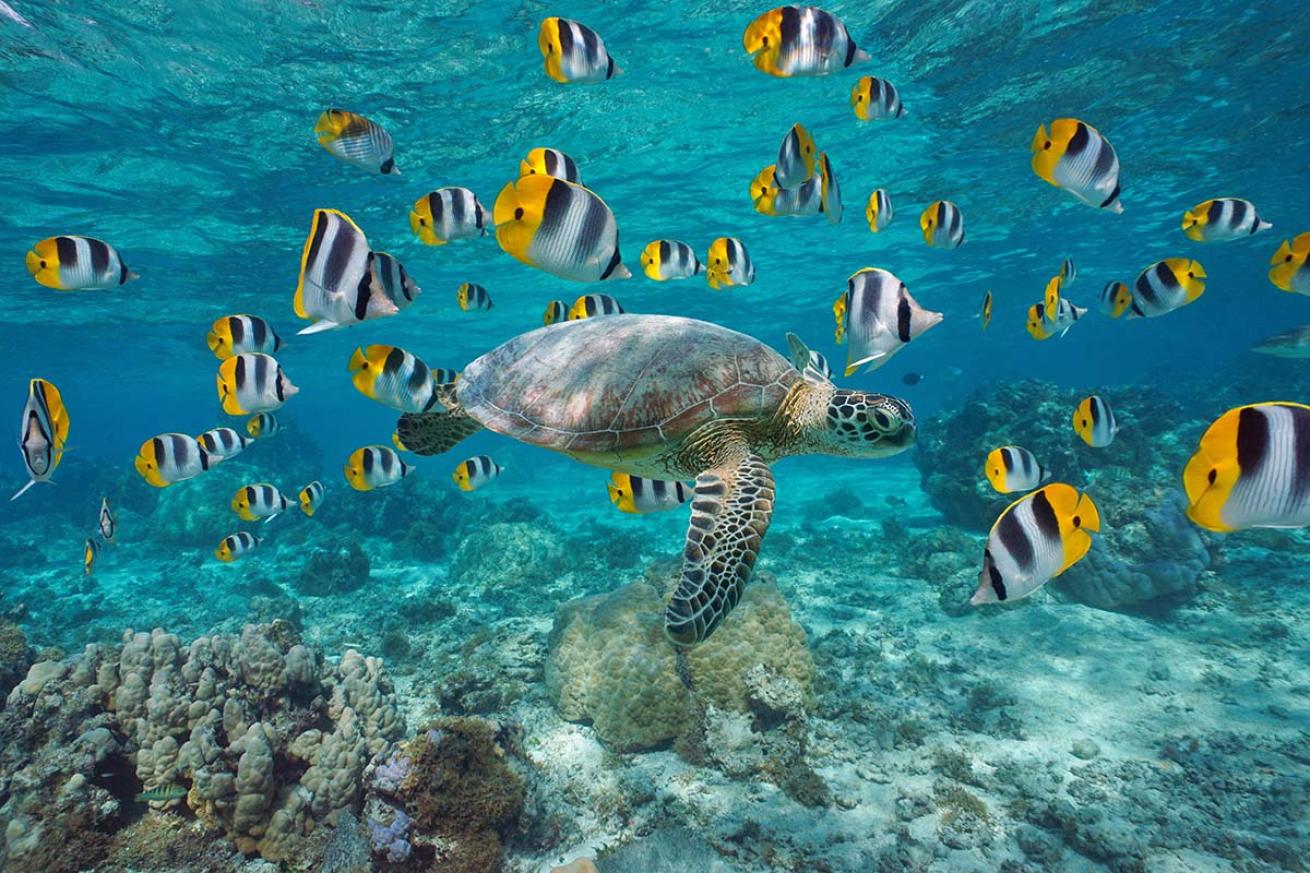
Shutterstock.com/DamseaA green sea turtle swims though a school of butterflyfish in a Bora Bora lagoon.
The waters of French Polynesia are home to five species of sea turtles, with green and hawksbill turtles commonly sighted throughout the Society Islands. Though nearly every reef dive around the Society Islands offers a chance of seeing sea turtles, you’ll often find them munching around the coral reefs off Les Tipaniers Beach, Moorea. Just a 10-minute walk away from Les Tipaniers Beach, the Te Mana O Te Moana Turtle Clinic offers a refuge to injured sea turtles, with a team of veterinarians on hand to provide specialized medical care. Divers can easily spend a surface interval learning about sea turtle behavior, conservation and ecology.
Trip Tips:
- Before you go, purchase an Air Tahiti Airpass to hop from island to atoll without paying full priced flight fares.
- Dive operators like Topdive, which has PADI Five Star Dive Centers throughout the region, offer packages where credits are valid at any of their dive centers.
- Pack your own set of mask and fins, as every island featured offers prime snorkeling for the rare day you’re not diving.










